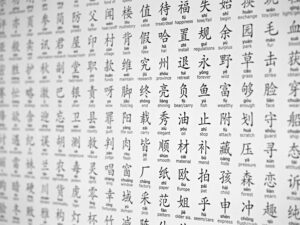Language is a fascinating aspect of human culture and communication. It allows us to express our thoughts, feelings, and ideas in various ways. However, not all languages are created equal when it comes to translation. Some languages pose unique challenges that make them incredibly difficult to translate accurately. In this blog post, we will explore the eight most difficult languages in the world to solve.

1) Mandarin Chinese:

With over one billion speakers worldwide, Mandarin Chinese is undoubtedly one of the most challenging languages for translators. Its complex writing system of thousands of characters requires an extensive understanding and knowledge base. Additionally, its tonal nature adds another layer of difficulty, as slight variations in pronunciation can completely change the meaning of words or phrases.
2) Arabic:
Arabic is known for its intricate grammar rules and diverse dialects across different regions where it’s spoken. The language has a rich vocabulary with many nuanced meanings that may not have direct equivalents in other languages. Translating Arabic texts often involves capturing cultural nuances while maintaining accuracy—an arduous task even for experienced translators.
3) Japanese:
Japanese presents several difficulties due to its three distinct writing systems: kanji (Chinese characters), hiragana (phonetic script), and katakana (used mainly for foreign loanwords). Each method has specific usage rules that must be followed meticulously during translation work—a challenge that demands both precision and creativity from translators.
4) Russian:

Russian poses significant challenges primarily because it uses Cyrillic script instead of Latin alphabet like English or Romance languages do—making reading comprehension more demanding initially if you’re unfamiliar with Cyrillic letters’ sounds or shapes. Translators also need deep cultural understanding since Russian idioms don’t always have straightforward translations into other tongues
5) Finnish:
Finnish stands out among European languages due to its grammatical complexity. The language employs numerous cases, suffixes, and inflections, resulting in long words and sentences. This makes translating Finnish texts laborious, requiring meticulous attention to detail and an in-depth understanding of the language’s unique structure.
6) Hungarian:

Hungarian is known for its complex grammar rules that differ significantly from other European languages. It has 18 cases, multiple tenses, and extensive use of agglutination (adding prefixes or suffixes to words). Translating Hungarian requires linguistic expertise and cultural knowledge to accurately convey the nuances embedded within this intricate language.
7) Korean:
Korea poses difficulties due to its honorific system, which reflects social hierarchies through different verb forms and speech levels. Translators must navigate these complexities while maintaining appropriate tone and respected translations. Additionally, Korean sentence structures can differ vastly from English, making it challenging to capture the intended meaning precisely.
8) Icelandic:
Icelandic is renowned for preserving Old Norse linguistic features. This ancient heritage results in archaic vocabulary, syntax, and grammatical constructions—making translation work particularly demanding. Icelandic translators require specialized training and deep familiarity with historical linguistics to ensure the accurate rendering of texts in this unique language.
Conclusion:
Translating any language comes with its own set of challenges. However, the eight languages discussed above stand out due to their distinct characteristics, such as complex writing systems, complex grammar rules, cultural nuances, and more. These factors make them incredibly difficult to translate accurately. Yet, it’s essential to note that skilled professional translators with adequate knowledge and experience can successfully overcome these obstacles. Language barriers may seem impossible at times, but they remind us of the rich diversity within our world.